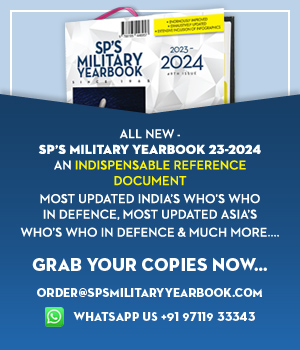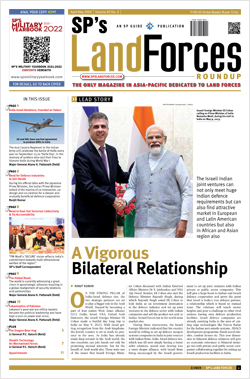INDIAN ARMED FORCES CHIEFS ON OUR RELENTLESS AND FOCUSED PUBLISHING EFFORTS
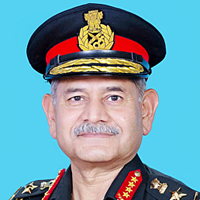
The insightful articles, inspiring narrations and analytical perspectives presented by the Editorial Team, establish an alluring connect with the reader. My compliments and best wishes to SP Guide Publications.
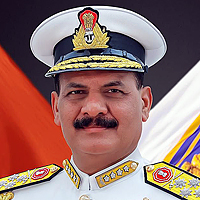
"Over the past 60 years, the growth of SP Guide Publications has mirrored the rising stature of Indian Navy. Its well-researched and informative magazines on Defence and Aerospace sector have served to shape an educated opinion of our military personnel, policy makers and the public alike. I wish SP's Publication team continued success, fair winds and following seas in all future endeavour!"

Since, its inception in 1964, SP Guide Publications has consistently demonstrated commitment to high-quality journalism in the aerospace and defence sectors, earning a well-deserved reputation as Asia's largest media house in this domain. I wish SP Guide Publications continued success in its pursuit of excellence.
- Appointments Committee of Cabinet approves one-month extension in service of Chief of the Army Staff
- Prime Minister witnesses 'Bharat Shakti' – a Tri-Services Firing and Manoeuvre Exercise in Pokhran, Rajasthan
- Interim Defence Budget 2024-25 — An Analysis
- Union Defence budget 2024
- Indian Army: In quest of greater firepower and policy recommendations for gaps
- Indian Army Annual Press Conference 2024
- Tata Boeing Aerospace Delivers 250 AH-64 Apache Fuselages, Manufactured in India
Facing the Brunt
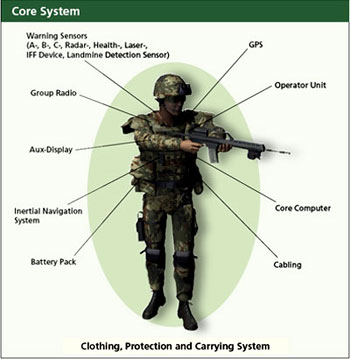
The pace of modernisation of our infantry has been pathetic. Red tape, lack of funds, lack of decisions, lengthy procurement procedures, barriers of DRDO and at times conflicting in-service views are contributing to this. Lack of proper equipping and modernisation implies not only depleted combat efficiency, but also avoidable casualties to our soldiers. There is an urgent need for speedy and ‘packaged equipping’ of the infantry.
Infantry has traditionally been the Queen of Battle. While the importance of the man behind the machine or weapon requires no debating, conflict situations like terrorism, asymmetric and fourth generation wars, as prevailing in Iraq and Afghanistan, have heightened their importance even more. At the same time, rapid advances in information technology are revolutionising methods of fighting. Situational awareness, information dominance, jointness, net-centricity, standoff precision weapons are the buzzwords, requiring a transformed infantryman capable of dealing with hi-technology war that will be short and intense besides contending with fleeting opportunities provided by terrorists/non-state actors/state sponsored non-state actors, who are becoming more and more sophisticated. Today’s infantryman has to be a man-machine-technology mix, a weapon platform with adequate firepower, self-protection, night fighting capability and mobility. He should have the ability to “see” the enemy or adversary much before he himself gets spotted and be networked to the required level, enabling him to effectively respond to any situation in real/near real time.
The pace of modernisation of our infantry has actually been pathetic. Red tape, lack of funds, lack of decisions, lengthy procurement procedures, barriers of Defence Research & Development Organisation (DRDO) and at times conflicting in-service views are all contributing to this. Lack of proper equipping and modernisation implies not only depleted combat efficiency but also avoidable casualties to our soldiers. There is an urgent need for speedy and “packaged equipping” of the infantry, notwithstanding the media blitz concerning the Futuristic Infantry Soldier As a System (F-INSAS) and Battlefield Management System (BMS) which still are a couple of years away and appear to be getting unduly delayed further.
Battlefield Management System
The success in future military operations will require a telescoped decision-action cycle and the ability to conduct operations simultaneously within an all arms group. This is very pertinent at the “Cutting Edge”; in the 400 odd Infantry and Rashtriya Rifles (RR) battalions of the Indian Army (IA), not counting the Assam Rifles (AR) and Infantry Territorial Army (TA) battalions deployed in counter insurgency (CI), low intensity conflict (LIC), anti-terrorism (both rural and urban), internal security (IS), disaster management and in contending with new forms of unconventional warfare besides regular deployment in varied terrain along our borders and in UN missions.
At present, the IA lacks an integrated system at the cutting edge; an integration tool supporting individual soldier to battalion group/combat group Commander in the Tactical Battle Area (TBA) that can provide in near real time an appropriate, common and comprehensive tactical picture by integrating inputs from all elements. Situational awareness is ad-hoc and so is the common operating picture (COP). To bridge this gap, the IA has planned fielding of the BMS at Battalion Group/Combat Group level and below as part of capability building. This would enable a faster decision process by commanders at all echelons, better the decision due to reliable operational information provided in real time and ability to quickly close the sensor to shooter loop. The BMS is to be integrated with other components of the Tactical Command, Control, Communications and Information (Tac C3I) System through the Command Information and Decision Support System (CIDSS) .
Through the BMS, the IA wants to provide a command and control system spanning the TBA spreading across individuals, detachments, combat platforms, sensors, sub units, units to the Battalion Commander/Regiment Commander; achieve faster reaction capability and flexibility in command and control by providing information automatically in the right place at the right time, thereby compressing the OODA loop; provide a strong foundation for making decisions based on near real time, consistent and well structured information, thereby enhancing the information handling capability of commanders at all levels; strengthening information exchange by having a strong messaging and replication mechanism; improving and modernising presentation of information in near real time; integrating with other command and control system.
The BMS is to be a highly mobile integrated system with a high data rate, comprising a Tactical Hand Held Computer with individual soldiers and Tactical Computers at Battle Group Headquarters and combat vehicles employing application and database servers connected on a data enabled communication network, enabling a COP by integrating inputs from all relevant sources within a battle group by integrated use of GIS and GPS. The communications are to optimally utilise the bandwidth available for military communications, not interfere with the legacy communication equipment, retrofitted into combat platforms and scalable to ensure its availability to all elements ranging from man-portable to fit in combat vehicles. The technology being sought is mostly available in the world market and the indigenous industry has the competence to meet system requirements. However, the project would involve customisation, integration and testing (laboratory and field conditions), validation, fielding and eventual equipping. In Phase 1, integration of the system, establishment of the test bed lab and field trials at test bed location (one combat group and three infantry battalion groups) originally planned by 2012 is delayed by more than nine months due to indecision on delimitation between the BMS and the F-INSAS. This self-inflicted delay will have cascading effect on subsequent phases of the BMS project; Phase II under which equipping was to be undertaken by 2017 and Phase III comprising change management and upgradation of the system originally planned for completion by 2022.
Infantry Modernisation
It was very evident to the IA deployed as part of the Indian Peace Keeping Force (IPKF) in Sri Lanka that the Sri Lankan infantry soldier was far better equipped in comparison to its Indian counterpart in every aspect from head to toe, be it the helmet, combat dress, web equipment, belt, boots, raincoat/poncho, personnel weapon, quality of maps, etc. Had the LTTE not been fighting with the AK-47/ AK-56, perhaps our infantry would have even continued with the 7.62 mm SLR. The situation has improved somewhat since then but only slightly. Modification 4B to the war establishment (WE) of a Standard Infantry Battalion was approved in 1998, but is yet to be implemented in all infantry battalions. This programme is to give more firepower and night capability to the Infantry including improved anti-tank guided missiles (ATGMs) with night capability, battlefield surveillance radars (BFSRs), hand held thermal imaging (HHTIs) devices, individual night sights, disposable rocket launchers, anti-material rifles (AMRs), under-barrel grenade launchers (UBGLs), sniper rifles, etc. The procurements under Modification 4B had to be shared with the RR battalions that needed the same urgently because of their permanent deployments in J&K but were not authorised such equipment and weapons till end 2009; a typical example of extreme bureaucratic intransigence. There have been improvements in the Mechanised Infantry. The BMP-2 ICV and the 81 mm Carrier Mortar Tracked Vehicle (CMTV) are getting fielded but complete equipping of all Mechanised Infantry units will take many years.
The F-INSAS programme, which is to ensure a dramatic increase in lethality, survivability and mobility while making the infantry soldier “a self-contained fighting machine”, is based on the Land Warrior system of the US Army and Future Soldier programmes of other nations. This is to be developed in three phases: Phase 1 (by 2012) comprising weapons, body armour, clothing and individual equipment, Phase II comprising the target acquisition system and Phase III comprising the computer sub system, radio sub system, software and software integration. F-INSAS will provide the infantryman with latest weaponry, communication network and instant access to information on the battlefield. It will include a fully networked all-terrain, all-weather personal-equipment platform, enhanced firepower and mobility for the digitalised battlefield of the future. The infantryman will be equipped with mission- oriented equipment integrated with his buddy soldier team, the sub-unit, as also the overall command, control, communications computers, information and Intelligence (C4I2) system. Complete fielding in all infantry and RR units is likely to be completed by 2020 or so.





